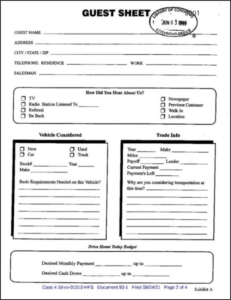The US Court of Appeals for the Fourth Circuit reversed and remanded a district court’s arbitration award because the district court lacked proper subject matter jurisdiction, independent from the Federal Arbitration Act (FAA), to enforce the award. SmartSky Networks, LLC v. DAG Wireless, LTD, Case No. 22-1253 (4th Cir. Feb. 13, 2024) (Diaz, Thacker, Rubin, JJ.)
SmartSky Networks filed suit in the district court against Wireless Systems Solutions and related companies and individuals over alleged breach of contract, trade secret misappropriation and deceptive trade practices. The parties entered into a business relationship regarding wireless communications in 2017. The relationship was governed by several agreements in the form of statements of work, purchase orders and a teaming agreement.
After filing suit in the district court, SmartSky submitted an arbitration demand against Wireless Systems. The related companies and individuals voluntarily agreed to submit to arbitration with respect to SmartSky’s claims filed against them. Wireless Systems moved to stay the district court action pending arbitration. The arbitration tribunal found in favor of SmartSky and issued an award, which included monetary damages in favor of SmartSky and a permanent injunction against the other parties. Thereafter, SmartSky filed a motion to enforce the award, and the district court confirmed the award. Wireless Systems and the related entities appealed.
The threshold question on appeal was whether the district court had subject matter jurisdiction to confirm the arbitration award. Wireless Systems argued that the 2022 Supreme Court decision in Badgerow v. Walters dictated that the district court lacked subject matter jurisdiction to enforce the arbitration award. In Badgerow, the Supreme Court held that a federal district court faced with an application to enforce or vacate an arbitration award under Sections 9 or 10 of the FAA must have a basis for subject matter jurisdiction independent from the FAA and apparent on the face of the application. The Supreme Court further held that “look-through” jurisdiction (when a court looks beyond a petition to compel arbitration to the underlying controversy to determine whether subject matter jurisdiction exists) only applies to petitions to compel arbitration under Section 4 of the FAA, and that such jurisdiction is not available for Section 9 and 10 applications to confirm, vacate or modify arbitration awards.
Reviewing the district court ruling de novo, the Fourth Circuit reversed and remanded. The Court reasoned that at the time the parties filed their respective Section 9 and 10 applications, the dispute focused on the enforceability of the arbitral award and not on the issues and claims already resolved by the tribunal. For the district court to find that it had jurisdiction over the contract dispute between the parties, the district court had to “look through” to the civil lawsuit and determine that a federal claim existed. Ruling consistently with Badgerow, the Court determined that “look-through” jurisdiction is not available for Section 9 and 10 applications. The Court reasoned that once the tribunal ordered that all claims between SmartSky and Wireless Systems be arbitrated and the related companies and [...]
Continue Reading
read more

 Subscribe
Subscribe



